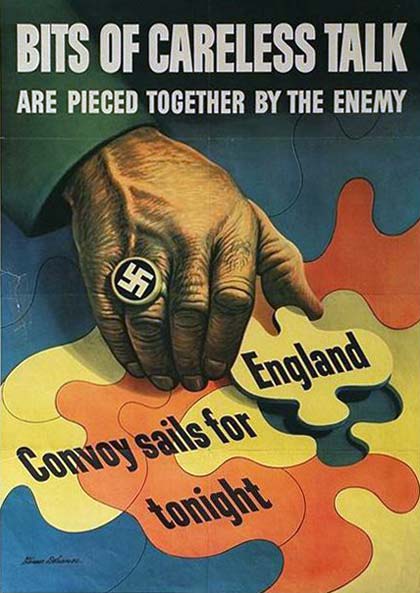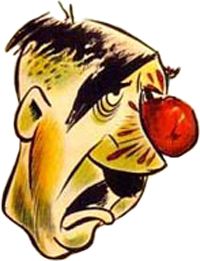 The threat of Nazi spies lurking in the shadows forced home front Americans to be careful about what they said about troop movements, military production and other sensitive subjects. (Image courtesy Northwestern University Library)
The threat of Nazi spies lurking in the shadows forced home front Americans to be careful about what they said about troop movements, military production and other sensitive subjects. (Image courtesy Northwestern University Library)
This exhibit and consists of the equivalent of over 400 printed pages of narrative text augmented by hundreds of images and thousands of original documents describing Oregon before, during, and after World War II. It looks at the lives of ordinary Oregonians and how they responded to the challenges of world war.
A Bird's Eye View
The exhibit reviews Oregon life and the larger world of politics and power before the war. It traces how Japanese Americans came to be seen as a threat and how they were treated in internment camps. Then, it examines the extraordinary measures, such as blackouts and incident drills, designed to protect the state from attack. The exhibit also explores rationing, victory gardens and other steps aimed at maximizing resources in the war effort. Home front life covers topics such as rumor control, prostitution and juvenile delinquency. Returning veterans, the G.I. Bill, and the advent of the Cold War are a few exhibit subjects describing life after the war.
Exhibit Goals
The main goals for this exhibit are to educate and entertain. The exhibit uses original records to highlight research opportunities at the Oregon State Archives. Whenever possible, it directly quotes from the letters, reports and other documents created by people who participated in historical events. Their actions reveal the full range of human experience -- from selfless to petty and from heroic to criminal. Their stories are at the heart of life on the home front and come from every corner of Oregon.
Target Audience
While designed for a general audience, this exhibit includes resources for students. Middle school students and older will find useful information.
 Axis leaders, such as Adolf Hitler, were portrayed as stupid or evil, or both. (Image courtesy Disney Online)
Axis leaders, such as Adolf Hitler, were portrayed as stupid or evil, or both. (Image courtesy Disney Online)
Records Used
This exhibit uses mostly primary records. These consist of original documents, publications and other items created in the years surrounding World War II. The focus is on the records of the Oregon State Defense Council, but other record groups are used as well. These are documented in the "learn more" section. Primary sources are augmented by secondary sources such as books and periodicals. Relevant sources are cited in notes at the bottom of pages.
Images and Media
Images in this exhibit have been edited for display. Most are from the Oregon State Defense Council. These are supplemented by images from other Oregon State Archives record groups and outside sources. All images with the citation "OSA" are available at the Oregon State Archives.